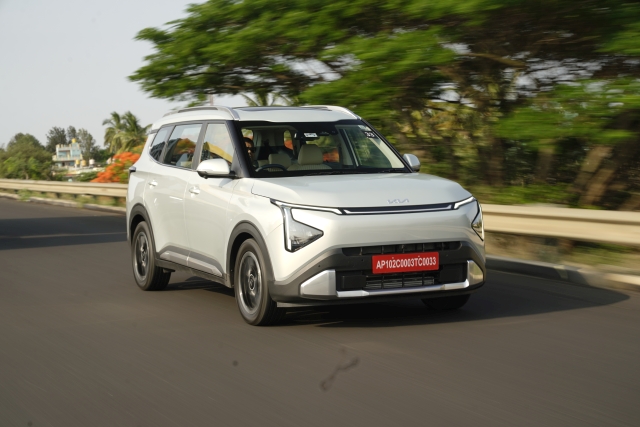The all-new Kia Carens Clavis is the next-generation version of the popular people-mover but aims at a more sport-utility vibe than a multi-utility one. However, the focus clearly was on utility and, regardless of genre, it is a better car than the regular Carens. We drive the turbo-petrol-DCT combination.

Winning the Indian Car of the Year (ICOTY) award is a huge deal. So, for a multi-utility vehicle (MUV) to take top honours shows it was above and beyond the competition at hand—and not just in its segment. And why should it not have won? The Carens is well-built, drives well, handles predictably, has a load of safety and convenience features, and comes with a choice of petrol and diesel engines, each with a choice of manual and automatic transmissions. It is high on practicality, comfort, space, and versatility and even considerably high off the ground. The Carens Clavis, then, takes all these attributes and combines them together just as well, with the addition of a number of features demanded by buyers in the segment. These include a larger pair of screens, smart key functions, a dual-pane panoramic sunroof, and increased ADAS capability, all packaged within a striking new design based on Kia’s “Opposites United” philosophy.
The result is a car that not just drives well but feels comfortable and relaxing to be with an aura of safety. Oh, and the name is derived from the Latin clavis aurea, translating into “golden key”. The “key” which is meant to unlock a new level of driving comfort and sophistication for the modern family car-buyer. So, have they succeeded?
Well, yes, they started out with a successful base in the first place. So, there was the cake with the cherry on top and everything to begin with. You could say the cake was baked fresh each time and refreshed with some new toppings every year. This time round, the cake has some new flavours never offered before, has even more cream, and definitely has more than one cherry on top. Thus, it is a better and smarter offering with the changes, both subtle and not so subtle, making it quite a unique pick for those seeking more space and conveniences for family and friends on the move.

Let’s start with the face. The closed-off look continues but, this time, there will be an all-electric version, along with its combustion siblings. Flanking the new face are distinct LED strips running across the front, with the new “ice-cube” MFR headlights housed in a triangular cluster—and looking very sharp; perhaps the most distinct change. The changes extend to the edges and the side profile, apart from it being 10 millimetres longer than the Carens, at 4,550 mm. In its quest to drop the “MUV” moniker and have it replaced with “SUV” instead, there are skid-plates front and rear, along with cladding, with a matte chrome finish on the lower section of the doors.

Larger 17-inch wheels now appear, sporting a diamond-cut finish, wrapped in 215/55 rubber. The treatment on the D-pillar is interesting, giving the Clavis a sleeker bookend wrapping up in the new tail with the “Starmap” LED strip connecting both light clusters. Although the shape is reminiscent of the Carens, the finish and the pattern are different. This was also done to provide for bulbs in the lower variants.

That said, the Kia Carens Clavis will get a slew of trims, starting with the entry HTE, the mid-level HTK, and the top-end HTX+, with option packs in between. The HTX+ is what we have here with the turbo-petrol engine and dual-clutch automatic transmission. The engine line-up, comprising three 1.5s, is identical to the Carens’, but the transmission choices have been revamped. The G1.5 nat-asp petrol, with 115 hp and 144 Nm, kicks off the range and is offered with only a six-speed manual. The more powerful turbo-petrol producing 160 hp and 253 Nm gets a choice of six-speed manual, two-pedal intelligent manual, and the seven-speed DCT. The turbo-diesel continues with 116 hp, 250 Nm, and a choice of six-speed manual or automatic. Not all combinations will be offered in each trim. From what we know, the G1.5 will have three lower trims, the diesel will only be offered in one trim with the automatic. The TGDI will be offered in the most number of trims and is the only one with the HTX+ trim.

Again, what we have here is the 1.5 TGDI HTX+ DCT, the absolute top model. Kia are tight-lipped on price but we expect this variant to cost well over Rs 20 lakh (ex-showroom). In this day and age, that seems more than fair considering the kit on offer and the way it drives. And those are both big factors.
More on page 2 >

